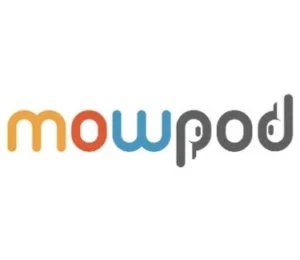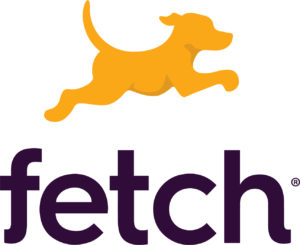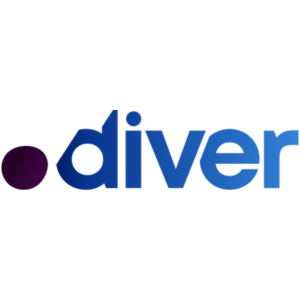Best Practices For Fast Marketing Innovation
Oren Greenberg
Kurve.io

- Part 1How to Test & Validate the Right Channels
- Part 2 Best Practices For Fast Marketing Innovation
- Part 3How To Use Personalized Video In B2B SaaS Outreach
Show Notes
-
?02:30Who is actually driving the traffic in the martech industry??05:30 - How much overall traffic percentage is in the Top 25
Quotes
-
“Theres quite a few different players that are growing and Im going to name drop a few from the list of the Top 25 that command the most amount of traffic and I think some of them are less intuitive and a bit surprising. But Id skip the obvious ones like Google, YouTube, Twitter, Facebook, Amazon.” - Oren
-
“The others that you may not have heard of are, Taboola, Outbrain, and Criteo. When we think about Outbrain and Taboola, these are native ads providers so when you go to scroll at the bottom of the Guardian or New York Times and you click an ad that takes you to the advertiser, thats a native ads placement and whats going on there is that its hitting that server and then redirecting you to the advertisers website.” - Oren
-
“What was surprising to me was that I didnt expect them to be in the Top 25 of the 7,180 websites in terms of total traffic. So Outbrain and Taboola are really the two players when it comes to native ads and then Criteo is effectively the same but just with display. Theyre not destinations in the same way as Pinterest, Quora, or Tumblr but they are middlemen.” - Oren
-
“When we think about the overall martech industry, there are some obvious end destinations, the largest websites in the world, those are kind of no-brainers. Then, were seeing the second class of theres this ad platform that is really reporting traffic but it is not necessarily traffic in the way that you and I would think of it as, Im driving traffic to my site to either serve advertising. It is really just kind of a tracking mechanism for them to understand who is using their platform.” - Ben
-
“Its quite counterintuitive. So what Ive done with a few personal contacts, I said whats your estimate in terms of total traffic and I expected people to say, 10% or 40% but people just kind of rely on the gut-feeling in Pareto (Principle). So they say 20% of the websites drive 80% of the traffic which would 1, 400 websites out of the 7, 111.” - Oren
-
“But actually the Top 1% of all websites which is 71 commands 98% of all the traffic. So the 7, 111 left are competing for 2% which is scraps.” - Oren
-
“There are dozens of winners in the 2% and Ill give you an example which I thought is quite interesting. I dont know if you heard about the company called Braze, they have about 700 to 800 employees now and they are tracking omnichannel, text message plus mobile plus email and they are growing at an exponential rate and they are one of the fastest growing B2B businesses based on traffic in the martech landscape over the last three years.” - Oren
-
“Another one which I am embarrassed to say that I havent heard about until two days ago, and this company is in the CRM category and its called Odoo and theyve almost doubled their traffic in three years but theyve also taken a nice chunk of the overall traffic share in the CRM category which is one of the oldest martech category and surprising that a, that category is still growing and is actually one of the fastest-growing categories which is also very surprising to me.” - Oren
-
-
“Some of them are also interesting because of their drop. In the social media marketing and monitoring category, which is a vast category, theres a company called, Ask.fm and heres the shocker, they went from 578 million visits a year in 2017 to 114 million visits in 2020. Thats a pretty precipitous drop.” - Oren
-
“Its very interesting when you look at the martech landscape as a whole, the fragmentation is very interesting so trying to categorize it is really the challenge that I took upon myself to try and see if theres any coherent patterns or insights that can be drawn from it.” - Oren
-
“The problem is the number of players per category concentration is incredibly diverse. Some categories like customer data platform and governance and compliance have only 40 to 50 players in them but CRM or leads capture has 250 to 280 players. So in actuality, there is so much variability even in the number of players in a category that even for like that, comparison is tricky.” - Oren
-
“My takeaway from this is that when you look at the overall traffic youre going to lean heavily on the biggest platforms. End destinations provide a lot of value, create an incredible amount of content and a lot of it is user-generated content as well. We get to the second-tier of who is driving traffic and in this case its not really what I would call traffic, these are ad platforms that are reporting clicks but really its just adoption of their platform.” - Ben
-
“Then we get into a lions share of the martech industry and how were fighting over what we call 2% of the overall traffic and to me its interesting with some of the pretty drastic fluctuations in terms of who is gaining traffic and who isnt.” - Ben
- Part 1How to Test & Validate the Right Channels
- Part 2 Best Practices For Fast Marketing Innovation
- Part 3How To Use Personalized Video In B2B SaaS Outreach
Up Next:
-
Part 1How to Test & Validate the Right Channels
In this first episode with Oren, we talk about traffic in the most reductionist sense and how it can help build scalable and predictable growth engines for different businesses. We also talked about analyzing traffic on a category level and how these categories are growing and shrinking intuitively.
Play Podcast -
Part 2Best Practices For Fast Marketing Innovation
In our second episode with Oren, we discussed who are the 800-pound gorillas in the martech room, how much overall traffic they cover and how the remaining 2% compete for the end traffic of their domains. We also talked about the fragmentation in the martech industry and how categorizing it poses a difficult challenge.
-
Part 3How To Use Personalized Video In B2B SaaS Outreach
In this third and final episode with Oren, we discussed how building your brand and direct and people coming to you directly is the primary growth channel for the Martech industry. We also discussed the referral growth and its correlation with organic traffic and why referral is an interesting channel in terms of predicting growth.
Play Podcast










